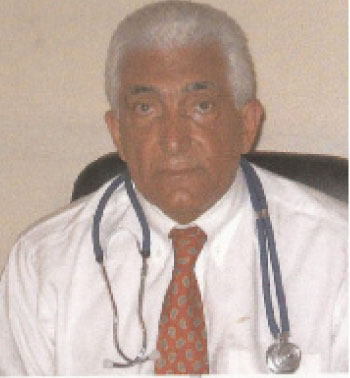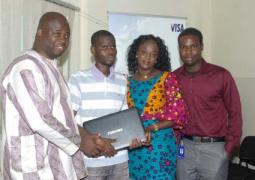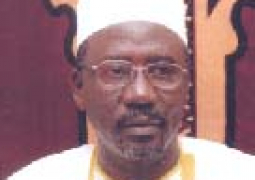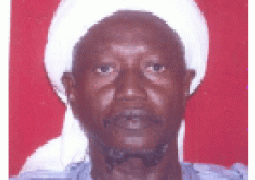
Of course in this learning process, children tend to make mistakes. Departing from the mistakes made the child will be more aware of the actions that are useful and not useful, proper or improper. But parents address any child’s learning process that is by force. For parents, children who violate the act need to be controlled and punished. For parents who do children’s actions violated that needs to be controlled and punished.
Dr Hassan Azadeh, our health adviser, a senior lecturer at the University of the Gambia and a senior Obstetrician and Gynaecologist is continuing his articles about violence, this week focusing on violence against children worldwide and the health complications of mental, physical and psychological sufferers of abused children worldwide for the rest of their lives.
According to Sutanto (2006), treatment of child abuse is an adult or older child to use the power / authority against a helpless child who should be the responsibility/guardians, the resulting pain, suffering, disability or death.
Violence occurs when a person uses force, power, and his position to hurt others intentionally, not because of coincidence. Violence also includes threats, and actions that could result in injury and loss. Injuries can be caused by physical injury, feeling, thinking, adverse health and child mental.
According to Andez (2006), child abuse is any actions that hurt and harm the physical, mental, and sexual abuse including insults include: Neglect and ill-treatment, exploitation including sexual exploitation and trafficking / sale of children. While the Child Abuse is any form of violence against children are committed by those who should be responsible for the child or those who have power over the child, who should be in trust, such as parents, close relatives, and teachers.
Violence is a daily reality for millions of children around the world, affecting girls and boys of all ages, all social contexts, and all nationalities. In every part of their lives —their homes and families, schools, institutions, workplaces and communities — children may be beaten, sexually assaulted, tortured, and even killed. The perpetrators of this violence are often the very individuals who are responsible for protecting children – their parents, guardians, teachers, employers, and the police and security forces. Violence is a global epidemic of scandalous proportions, violating every child’s right to a safe and healthy environment.
The UN Secretary-General’s 2006 Study on Violence against Children exposes the shocking scope of violence against children and documents its devastating effects on children, their families, their communities, and broader society. The Study clearly establishes the urgent need for immediate action to prevent and respond to violence against children in all of its forms.
We, as local, national, regional, and international non-governmental organisations from every part of the world, call on each UN member state to fully implement the Study’s important recommendations.
Having carefully considered alternative ways of ensuring global leadership on this issue, we also call on member states to act at the 2007 UN General Assembly to establish a Special Representative to the Secretary-General on Violence against Children to work with the UN system, member states, NGOs, children and youth as a high-level and high-profile advocate to ensure concrete action to end violence against children in all parts of the world.
In the home and family
The family has the greatest potential to protect children and provide for their physical and emotional safety. Human rights treaties recognize the right to a private and family life and home. But in recent years violence against children by parents and other family members has been documented. This can include physical, sexual and psychological violence as well as deliberate neglect. Frequently, children experience physical, cruel or humiliating punishment in the context of discipline. Insults, name-calling, isolation, rejection, threats, emotional indifference and belittling are all forms of violence that can damage a child’s well-being. Children are most frequently sexually abused by someone they know, often a member of their own family. Harmful traditional practices are generally imposed on children at an early age by family or community leaders. Much of this violence is hidden behind closed doors or because of shame or fear.
Children from violence. For many children, though, educational settings expose them to violence and may teach them violence. They are exposed to corporal punishment, cruel and humiliating forms of psychological punishment, sexual and gender-based violence, and bullying. Although 102 countries have banned corporal punishment in schools, often this ban is not adequately enforced. Fighting and bullying are also examples of violence against children in schools. Often bullying is associated with discrimination against students from poor families or marginalized groups, or those with particular personal characteristics such as appearance or a disability. Schools are also affected by events in the wider community – for example, gang culture or gang-related criminal activity associated with drugs.
In care and justice systems
As many as 8 million of the world’s children are in residential care. Relatively few are there because they have no parents; most are in care because of disability, family disintegration, violence in the home and social and economic conditions such as poverty. Children in some institutions face violence from care-givers and other children. Staff may ‘discipline’ them with beatings or restraints, or by locking them up. In some institutions, children with disabilities face violence in the guise of treatment, such as being subjected to electric shock to control their behaviour or given drugs to make them more ‘compliant’. Children in detention are frequently subjected to violence by staff. In at least 77 countries, corporal and other violent forms of punishment are accepted as legal in penal institutions. Detention of children with adults is routine in many countries, and this puts them at increased risk.
In work settings
Across all regions, violence – physical, sexual and psychological – affects many millions children who are working, both legally and illegally. It may be used to coerce children to work or punish or control them in the workplace. Some categories of illegal work have been identified as ‘worst forms of child labour’ and so are considered as violence against children. Most workplace violence is inflicted by employers, although those who inflict violence may also include co-workers, foremen, customers, police, criminal gangs and intermediaries. Many girls work in domestic labour, which is often unregulated. They report maltreatment such as physical punishment, humiliation and sexual harassment. The exploitation of children in prostitution or child pornography is not only a form of violence in itself; it also puts the exploited children at risk of physical and psychological violence, as well as neglect.
In the community
The community is a source of protection and solidarity for children but it can also be a site of violence – including peer violence, violence related to guns and other weapons, gang and police violence, physical and sexual violence, and trafficking. Violence may also be associated with the mass media and new information and communication technologies. Community violence often affects marginalized groups of children, such as street children. The mass media sometimes portray violence as normal or glorify it. Cyber-bullying through the Internet or mobile phones has been documented in recent times.
How can violence against children be prevented?
All violence against children and especially child maltreatment occurring in the first decade of life is both a problem in itself and a major risk factor for other forms of violence and health problems through a person’s life. For instance, a WHO study estimated that the lifetime impact of child sexual abuse accounts for approximately 6% of cases of depression, 6% of alcohol and drug abuse/dependence, 8%suicide attempts, 10% of panic disorders and 27% of post traumatic stress disorders.
Other studies have also linked child physical abuse, sexual abuse and other childhood adversities to excessive smoking, eating disorders, and high-risk sexual behavior, which in turn are associated with some of the leading causes of death including cancers and cardiovascular disorders.
WHO supports countries to collect data and information related to violence against children, develop national violence prevention policies and programmers, and create systems for the provision of appropriate medico-legal and emergency trauma care.
Further information is available at the Offices of UNICEF, WHO and UN, Child Protection Alliance in the Gambia among others. You can also call on Afri-radio live health program with Dr Azadeh every Wednesday from 9-9.30 am. You can also send email to azadehhassan@yahoo.co.uk or send text to 00220-7774469.
Read Other Articles In Article (Archive)
Islamic Consolidation and Solidarity (3rd and final)
Oct 29, 2010, 10:55 AM




